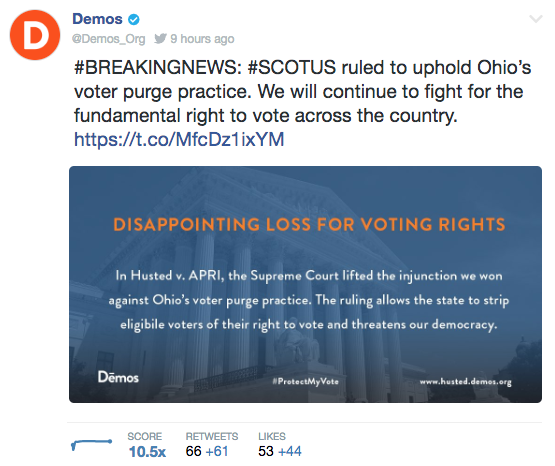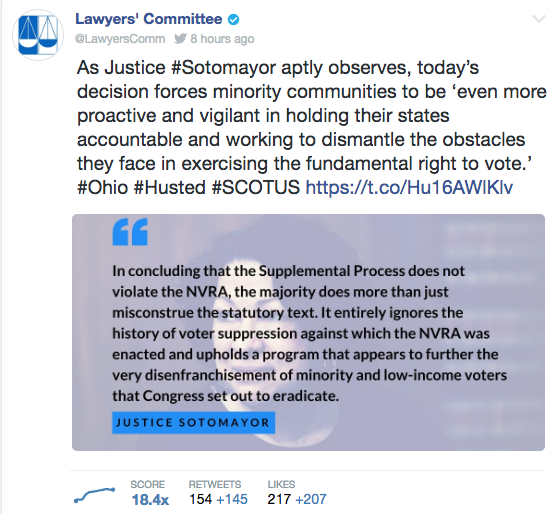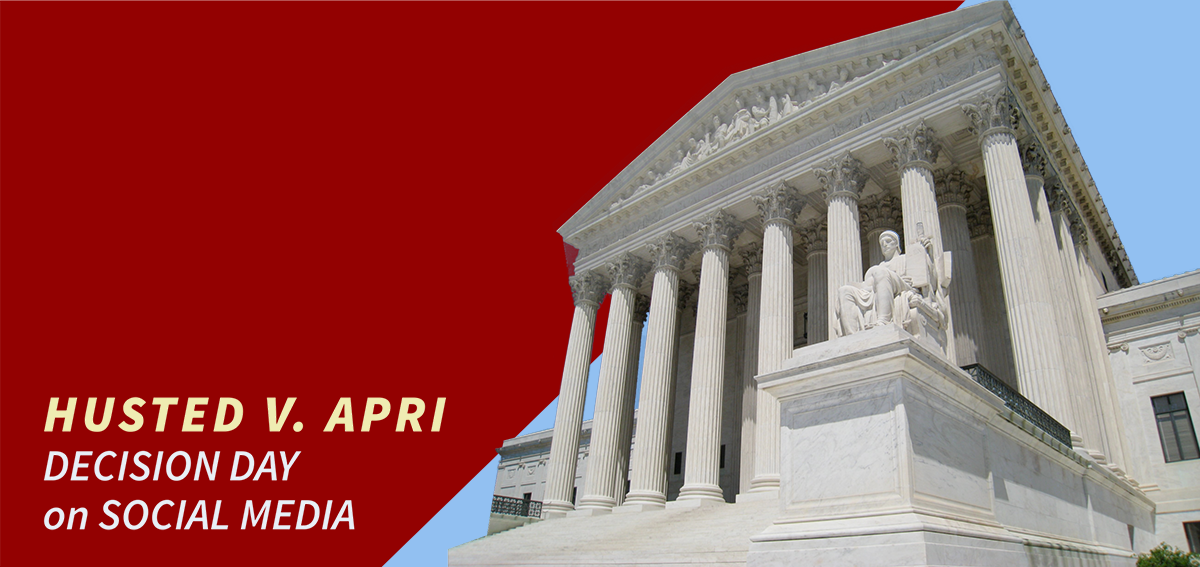
Tactics That Work: Talking SCOTUS Decisions on Social Media
In the wake of yesterday’s SCOTUS decision on Husted v. APRI, we took a look at what kind of Facebook and Twitter posts resonated most with audiences on social media. Using CrowdTangle, we can see what stood out from the rest of people’s newsfeeds — which posts groups’ followers were more likely to engage with than the average post. If you’re interested in other ways to use this powerful tool, check out our blog post on using CrowdTangle to find, engage with, and amplify news stories online. Groups in the democracy space employed many winning social media tactics that resulted in overperforming posts; a select few are highlighted below.
Despite a disappointing outcome in the case, groups were able to successfully
- point to solutions,
- contextualize the decision,
- grab people’s attention,
- tell stories, and
- recap relevant Justices’ opinions.
We wanted to lift up the following great tactics for all to see:
Pointing to solutions.
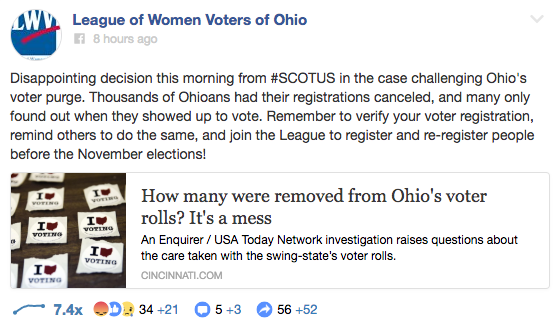
The League of Women Voters of Ohio included an inspiring call-to-action message alongside a news story explaining why the decision will make such a huge impact on Ohio voters. Even when the decision does not go our way, posts ending with an aspirational vision for our democracy will resonate with audiences on social media.
Contextualizing the decision.
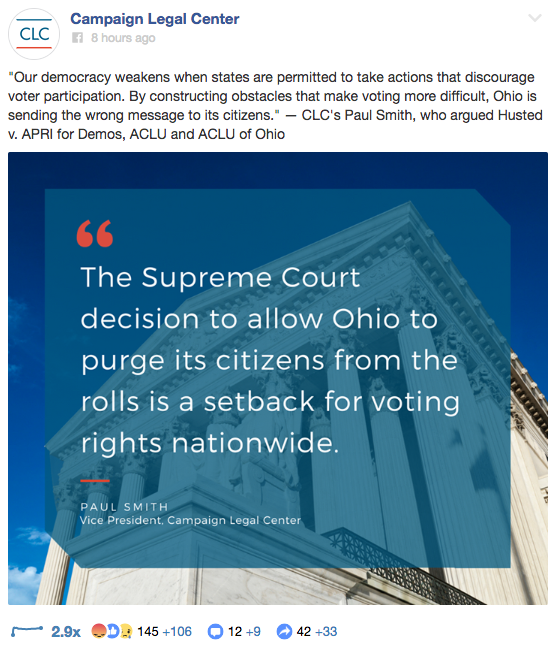
Campaign Legal Center’s clean, clear graphic rendition of Paul Smith’s statement about the case places the decision within a national context. In addition, his framing of the state of Ohio’s actions as “obstacles that make voting more difficult” is a powerful one, communicating in everyday language the impact this decision will have.
Grabbing people’s attention.
Demos’ tweet is a simple and clear announcement of an important breaking news story, capturing the attention of their Twitter followers and others following the hashtag.
Telling stories.
In this video tweet, Let America Vote tells the story of a single Ohio voter to make this abstract decision feel more real. This tactic does not need a video to work — writing a Twitter thread vividly describing a voter’s story could also give people a new perspective on the ruling.
Do you have a compelling story to share about your role in our democracy? Share it with us today!
Recapping relevant Justices’ opinions.
Using a quote graphic to convey the words of Justice Sotomayor’s dissent, along with recapping salient points in the body of the tweet, are two effective tactics the Lawyers’ Committee uses to communicate just how harmful this decision will be to many, many communities around the country.
The examples and the tactics employed in the above Facebook and Twitter posts serve as good reminders of what types of posts work best in a Supreme Court decision-day scenario — try and keep one or two in mind as we prepare for the final few major decisions to be handed down over the last days of June.
If you’ve got any other ideas or tactics we missed, please share! Or if you have any questions or would like to talk through how your group could employ any of these ideas in the future — please don’t hesitate to reach out to a ReThink staffer.
